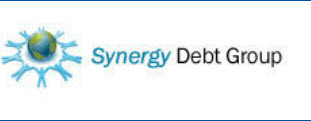Synergy Debt Group
from MONEYVILLE
Low interest rates: Pay off debt or invest?
January 12, 2012By Robb EngenEconomists have been predicting interest rate hikes for the past three years, but in the face of stiff economic challenges across the globe it’s more likely that the Bank of Canada will cut interest rates this year to mitigate the risk of a recession.
This low interest rate environment presents a great opportunity to pay off debt, particularly a mortgage or line of credit. With variable rate mortgages at less than 3 per cent and lines of credit offered at 3 or 4 per cent, borrowing money has rarely been more affordable.
However, there is a case to be made for Canadians to take advantage of cheap borrowing costs and invest for a higher return.
Paying off debt
The reason it makes sense to pay off debt during periods of low interest rates is that more of your payments are going towards principle, with less going towards interest.
A $300,000 mortgage at 2 1/4 per cent amortized over 25 years would require a $1,300 monthly payment, with $750 of your first payment going towards principle and $550 covering the cost of interest.
With the same mortgage terms, but an interest rate of 5 per cent, things look much different. The total monthly payments jump up to $1,750, with only $525 paying down the principle and $1,225 covering the cost of interest on your first payment.
Investing
Many people see the low cost of borrowing as an opportunity to amplify their investment returns. The theory is simple; you just need to generate a higher return with your investments to offset the cost of borrowing the money.
With some dividend stocks and Canadian REIT’s yielding between four and seven per cent these days, borrowing to invest can help increase your net worth much faster than simply paying down low interest mortgage debt.
Another investing strategy is to just make the minimum payments on your low interest debt (assuming you’re consumer debt free) and use the extra cash flow to invest in stocks or real estate. When interest rates eventually go up, you can reverse this approach and use the extra cash flow to pay off debt.
I’m taking a balanced approach and paying an additional $600 per month on our mortgage, with the goal to be mortgage free in 15 years. Any extra cash flow in our budget will go towards maxing out at least one of our tax free savings accounts.
Also Read:
6 reasons to avoid RRSP loans
How to use your RRSP to pay your mortgage
Robb Engen is half of the Boomer & Echo personal finance blogging team with his mother, a former financial advisor. Reach him at robbengen@gmail.com
End of article
~~~~About Synergy Debt Group
Synergy Debt Group enables consumers caught in the, "Minimum Monthly Payment Trap" to become debt free, providing an alternative to bankruptcy and the damages that come with it.
At Synergy Debt Group, we make it possible for our customers to achieve their financial
goals and gain independence from creditors quickly. If you are serious about getting out
of debt, preserving your credit, and saving money; give Synergy Debt Group a call today for
a free consultation.

No comments:
Post a Comment